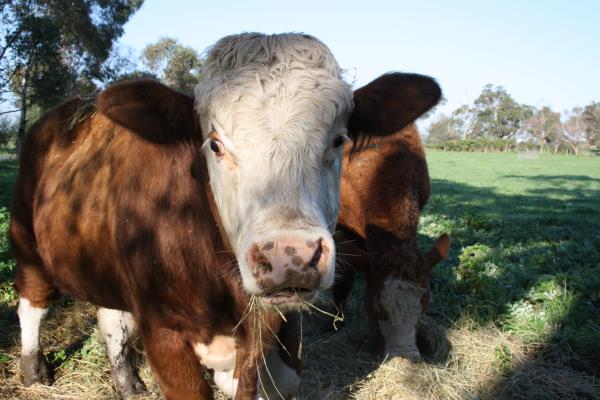Pink Eye is a contagious disease that mainly affects young cattle during summer and autumn, resulting in weight loss, lower weight gains, partial blindness as well as restricting the access of animals to some export markets.
The disease is caused by the Moraxella bovis bacterium which produces a toxin that irritates the eye.
The disease is mostly transferred from infected animals to clean animals by flies and, in some situations, on dry feed.
Certain factors make cattle more susceptible to the disease including dusty conditions, dry stalky feed that may irritate the eye, high fly numbers and poor pigmentation around the eye.
It is common for five to 10 per cent of animals to be infected on most farms in Victoria.
Severe outbreaks can affect up to 80 per cent of cattle.
Symptoms include watery discharge from the eye, excessive blinking or holding the eye closed, and swelling and redness of the third eyelid.
As the disease progresses the eye will become white and cloudy and may ulcerate.
Generally animals recover within three to five weeks and different degrees of scarring may occur causing blindness or vision impairment.
Treatment will depend on how many cattle are affected and the severity of the individuals that are affected.
Mustering animals into dusty yards and a confined space will most often increase the rate of spread to the non-infected animals.
Treatment should be, where possible, done on a mob that is being mustered for an essential reason such as marking.
Affected animals can be treated with antibiotic sprays or creams directly into the eye and then the eye should be covered with an eye patch made of heavy cloth and glued around the eye to stop exposure to dust and sunlight.
Consult a veterinarian for the best products used as eye patches.
The patch will generally fall off on its own in a few weeks’ time. Intramuscular anti-inflammatory and antibiotics can be used, however they are costly.
Withholding periods on all treatments also need to be noted.
Prevention includes:
* Limiting the spread through control of flies using pour-on insecticides or insecticide impregnated tags;
* Isolating infected animals from the mob;
* Avoiding yarding of cattle during summer months;
* Avoiding young stock being grazed on long dry stalky pastures where possible and;
* Vaccination is available for some strands of the bacterium but will not be effective in all cases and should occur prior to a challenge period.







